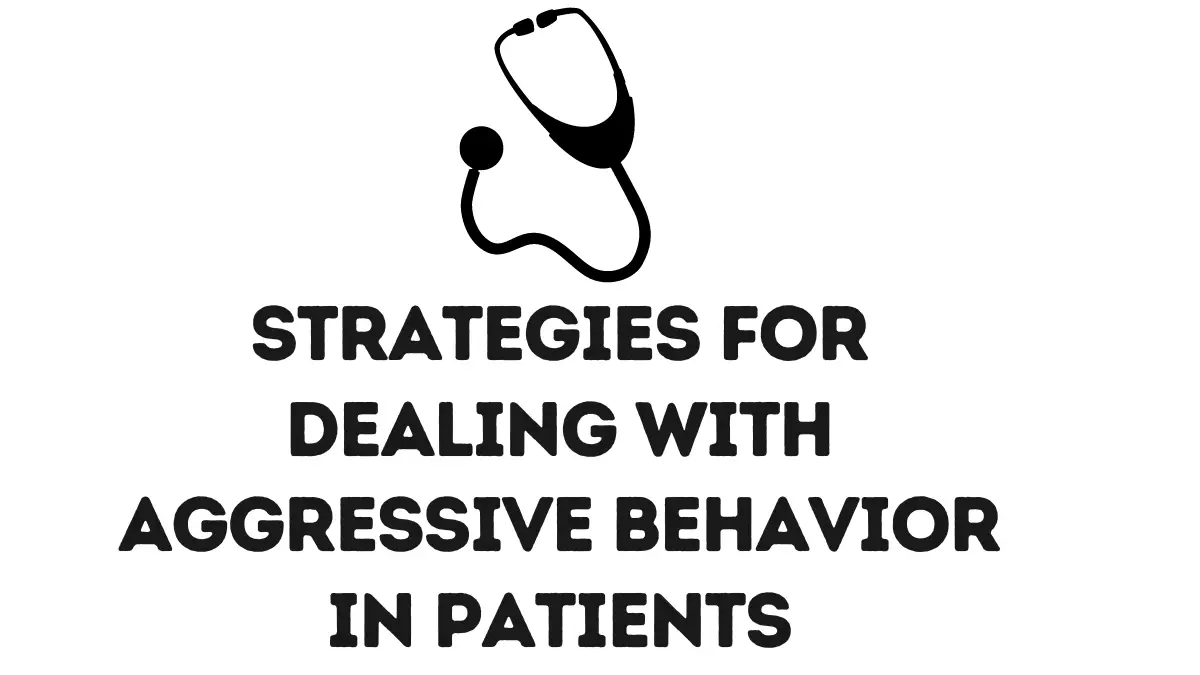Aggressive behavior in patients can present significant challenges for healthcare professionals, impacting the safety and well-being of both patients and staff. Whether in a hospital, clinic, or long-term care facility, dealing with aggression requires a multifaceted approach that prioritizes safety, compassion, and effective communication. In this comprehensive guide, we’ll explore various strategies and techniques for managing aggressive behavior in patients, drawing upon expert insights and practical solutions.
Understanding Aggressive Behavior
Before delving into strategies for managing aggressive behavior, it’s crucial to understand its underlying causes and triggers. Aggression in patients can stem from various factors, including medical conditions, pain, fear, frustration, or cognitive impairments such as dementia. Additionally, environmental factors, such as overcrowding or noise, can exacerbate aggressive tendencies. By identifying the root causes of aggression, healthcare professionals can tailor interventions to address specific needs effectively.
Table: Overview of Strategies for Dealing with Aggressive Behavior in Patients
| Strategy | Description |
|---|---|
| Effective Communication | Utilize active listening and non-confrontational language to defuse tense situations and establish rapport. |
| Environmental Modifications | Make adjustments to the environment to reduce stress and agitation, such as noise reduction and personal space. |
| Behavioral Interventions | Implement techniques such as relaxation exercises and cognitive-behavioral therapy to address underlying issues. |
| Pharmacological Interventions | Consider medication as a last resort for managing severe or persistent aggression under professional guidance. |
Effective Communication Techniques
Communication plays a pivotal role in de-escalating tense situations and preventing aggression from escalating further. Utilizing clear, empathetic communication techniques can help defuse volatile situations and establish rapport with patients. Some effective communication strategies include:
- Active Listening: Give patients your full attention, demonstrate empathy, and validate their feelings to foster a sense of understanding and trust.
- Verbal De-escalation: Use calm and non-confrontational language to diffuse aggression. Avoid using language that may provoke further hostility or aggression.
- Setting Boundaries: Clearly communicate expectations and boundaries to patients, ensuring they understand the consequences of aggressive behavior while maintaining a supportive and non-judgmental demeanor.
Environmental Modifications
Creating a safe and therapeutic environment is essential for minimizing the risk of aggression in healthcare settings. Environmental modifications can help reduce stress and agitation, thereby decreasing the likelihood of aggressive outbursts. Some practical strategies include:
- Noise Reduction: Minimize loud noises and distractions in the environment to create a calm and soothing atmosphere.
- Personal Space: Respect patients’ personal space and ensure they feel secure and comfortable in their surroundings.
- Visual Cues: Use visual cues such as signage or color-coded zones to help orient patients and reduce confusion or disorientation.
Behavioral Interventions
In addition to communication and environmental modifications, behavioral interventions can be effective in managing aggressive behavior in patients. These interventions aim to address underlying issues, teach coping skills, and promote positive behaviors. Some common behavioral techniques include:
- Relaxation Techniques: Teach patients relaxation exercises such as deep breathing or progressive muscle relaxation to help them manage stress and anxiety.
- Cognitive Behavioral Therapy (CBT): CBT techniques can help patients identify and challenge negative thought patterns and develop healthier coping strategies.
- Reinforcement Strategies: Use positive reinforcement techniques such as praise or rewards to encourage desired behaviors and discourage aggression.
Pharmacological Interventions
In some cases, pharmacological interventions may be necessary to manage severe or persistent aggression in patients. However, medication should only be used as a last resort and under the guidance of a qualified healthcare professional. When prescribing medications for aggression, factors such as the patient’s medical history, underlying conditions, and potential side effects must be carefully considered.
Conclusion
Dealing with aggressive behavior in patients requires a comprehensive and multidisciplinary approach that prioritizes safety, communication, and empathy. By understanding the underlying causes of aggression and implementing effective strategies, healthcare professionals can create a supportive and therapeutic environment conducive to positive outcomes. With the right tools and techniques, managing aggressive behavior can become less daunting, fostering better outcomes for both patients and caregivers.

